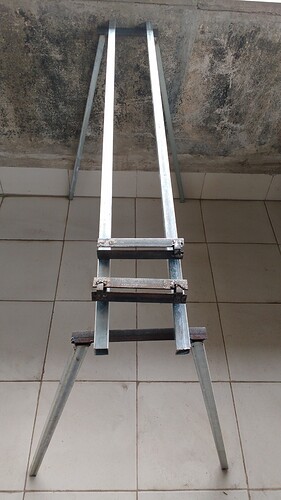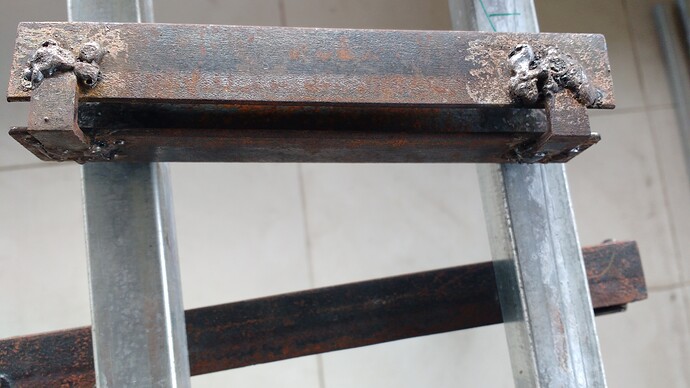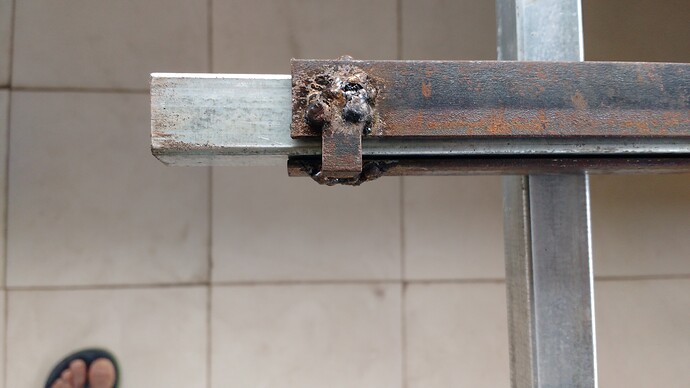I felt the need for a saw horse cum welding table. @Pneb wanted the working height different from what I need, the height has to be adjustable. Since the height has to be adjustable, might as well make it sufficiently adjustable to work standing or seated. Talk of feature creep!
Some images from the ongoing endeavor:
Legs with an angled cut of $11^o$ welded to the top.
Socket for adjustable height. Ugly welds due to lack of skill, but functional



